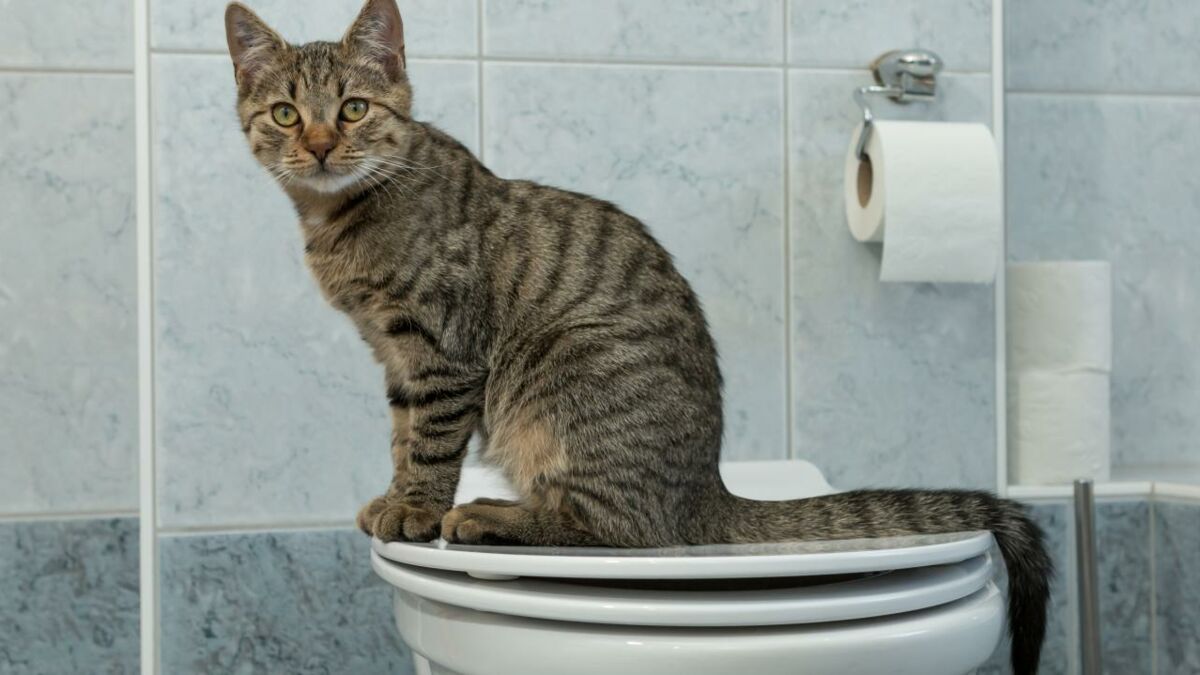Avoid Flush Cat Poop Down Your Toilet - Safeguard Your Plumbing System
Avoid Flush Cat Poop Down Your Toilet - Safeguard Your Plumbing System
Blog Article
On this page below you'll find a good deal of amazing tips in relation to Don’t flush cat feces down the toilet.

Intro
As cat proprietors, it's necessary to bear in mind exactly how we deal with our feline close friends' waste. While it may appear convenient to purge pet cat poop down the toilet, this practice can have damaging repercussions for both the atmosphere and human wellness.
Alternatives to Flushing
Luckily, there are safer and more liable ways to throw away cat poop. Think about the adhering to alternatives:
1. Scoop and Dispose in Trash
The most typical approach of throwing away pet cat poop is to scoop it into a biodegradable bag and throw it in the trash. Make sure to utilize a specialized trash scoop and throw away the waste immediately.
2. Usage Biodegradable Litter
Choose naturally degradable cat litter made from materials such as corn or wheat. These clutters are eco-friendly and can be safely gotten rid of in the trash.
3. Hide in the Yard
If you have a backyard, think about burying pet cat waste in an assigned area far from vegetable gardens and water resources. Be sure to dig deep adequate to avoid contamination of groundwater.
4. Install a Pet Waste Disposal System
Buy an animal garbage disposal system particularly designed for feline waste. These systems use enzymes to break down the waste, minimizing smell and environmental influence.
Health Risks
Along with ecological issues, purging pet cat waste can also present wellness risks to people. Pet cat feces might contain Toxoplasma gondii, a parasite that can trigger toxoplasmosis-- a possibly extreme illness, especially for expecting ladies and people with damaged body immune systems.
Ecological Impact
Purging cat poop introduces harmful pathogens and parasites into the water supply, positioning a significant risk to aquatic ecosystems. These contaminants can adversely influence marine life and compromise water top quality.
Conclusion
Accountable family pet ownership prolongs beyond supplying food and sanctuary-- it also involves proper waste administration. By avoiding flushing feline poop down the bathroom and going with different disposal methods, we can minimize our environmental impact and shield human wellness.
Why Can’t I Flush Cat Poop?
It Spreads a Parasite
Cats are frequently infected with a parasite called toxoplasma gondii. The parasite causes an infection called toxoplasmosis. It is usually harmless to cats. The parasite only uses cat poop as a host for its eggs. Otherwise, the cat’s immune system usually keeps the infection at low enough levels to maintain its own health. But it does not stop the develop of eggs. These eggs are tiny and surprisingly tough. They may survive for a year before they begin to grow. But that’s the problem.
Our wastewater system is not designed to deal with toxoplasmosis eggs. Instead, most eggs will flush from your toilet into sewers and wastewater management plants. After the sewage is treated for many other harmful things in it, it is typically released into local rivers, lakes, or oceans. Here, the toxoplasmosis eggs can find new hosts, including starfish, crabs, otters, and many other wildlife. For many, this is a significant risk to their health. Toxoplasmosis can also end up infecting water sources that are important for agriculture, which means our deer, pigs, and sheep can get infected too.
Is There Risk to Humans?
There can be a risk to human life from flushing cat poop down the toilet. If you do so, the parasites from your cat’s poop can end up in shellfish, game animals, or livestock. If this meat is then served raw or undercooked, the people who eat it can get sick.
In fact, according to the CDC, 40 million people in the United States are infected with toxoplasma gondii. They get it from exposure to infected seafood, or from some kind of cat poop contamination, like drinking from a stream that is contaminated or touching anything that has come into contact with cat poop. That includes just cleaning a cat litter box.
Most people who get infected with these parasites will not develop any symptoms. However, for pregnant women or for those with compromised immune systems, the parasite can cause severe health problems.
How to Handle Cat Poop
The best way to handle cat poop is actually to clean the box more often. The eggs that the parasite sheds will not become active until one to five days after the cat poops. That means that if you clean daily, you’re much less likely to come into direct contact with infectious eggs.
That said, always dispose of cat poop in the garbage and not down the toilet. Wash your hands before and after you clean the litter box, and bring the bag of poop right outside to your garbage bins.
https://trenchlesssolutionsusa.com/why-cant-i-flush-cat-poop/

I discovered that blog post on Can You Flush Cat Poo or Litter Down the Toilet? when doing a lookup on the web. Sharing is good. Helping people is fun. Thank-you for taking the time to read it.
Book Now Report this page